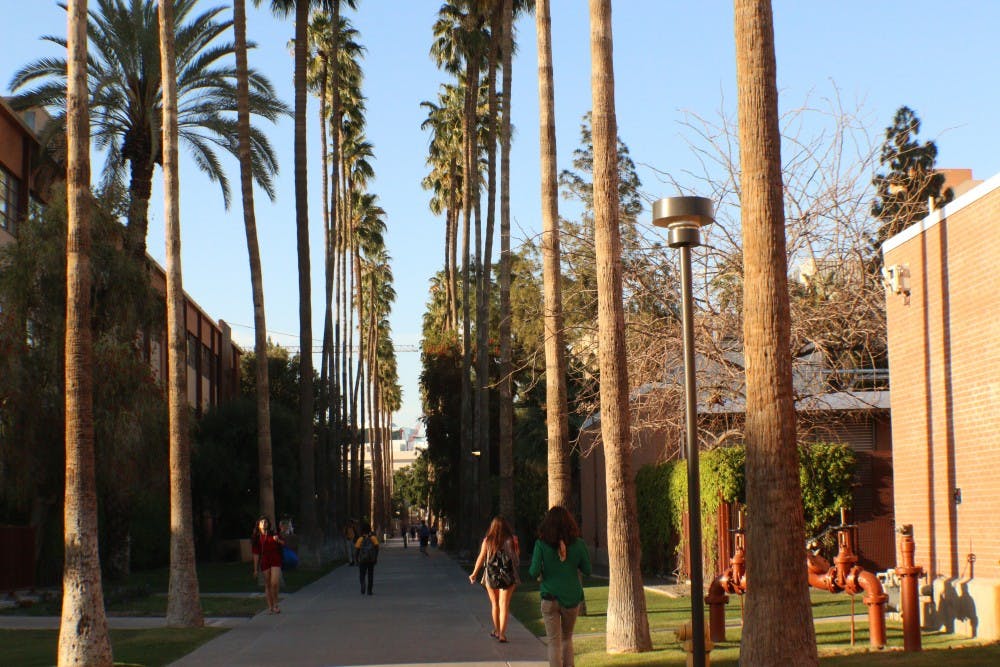With over 300 days of sunshine per year, it’s no wonder that Arizona State University’s main campus is outdoor-friendly and iconic. Located in the heart of Tempe, campus features many historical buildings, such as Old Main and Gammage Hall. One of the most notable features of the campus is the seemingly endless array of palm trees stretching from the Sun Devil Fitness Center to University Drive, also known as Palm Walk.
“I feel (Palm Walk) is convenient for people who walk to class, it’s a straight shot if you just simply want to cut across campus,” says Aaron Ho, political science freshman.
The pathway turns 100 years old in 2016, which means the trees will have to be replaced soon, as they have reached the end of their lifespan. The trees located at the northern end of the walkway were planted in 1916 by former university president Arthur John Matthews. As the campus continued to grow, the university incrementally added palms of matching height — and therefore, matching age. The trees near the SDFC were planted in 1930 when the path was extended and by 1946 there were 215 palm trees all around the Tempe campus.
President Matthews, who served as the first president of the university from 1904 to 1930, clearly left a lasting mark on the campus. However, archivists are not exactly sure how Palm Walk came to be the iconic symbol of the university.
“It would have made sense to beautify (the campus),” university archivist Rob Spindler said in an interview with ASU Now. “Part of the mystery is that it was done in chunks… It wasn’t like we planned to have this great icon until the 1920s.”
Not only is the Matthews Center named after him, but what once started as a few trees along a pathway, has now turned into a symbol of the university.
The array of Mexican fan palm trees is one of the most photographed sites on campus, but these palms are rumored to be replaced with date palms — a shorter but much shadier tree. Date palms must be planted when they are around 18 to 20 feet in height. Although it will seem like a stark difference to the 65-foot-tall trees currently along Palm Walk, the date palms will eventually grow to be 80 feet and provide much-needed shade during the Arizona summer.
“The replacements will probably be done in increments, a section at a time – from University to Tyler or Orange and then Orange to the (Student Resource Center), for example,” says Ellen Newell, director of Grounds Services told ASU Now. “The removal of the old palms will also be expensive as it will need to be done with cranes, and the irrigation system will need to be updated.”
The renovation of Palm Walk will prove to be an extensive process with a lot of planning. However, the actual replacement of the trees won’t take place for some time.
“We have not done a complete estimate yet as the replacement size will have quite a bit to do with the final price,” Newell says.
Although there isn’t an official timeline just yet, the university has started to plan and budget this makeover, which will prove to be expensive, but valuable. However, some students feel this is the perfect opportunity to transform Palm Walk into something completely new.
“I guess (date palms) would be cooler, but I want Palm Walk to be more vibrant,” Ho says. “If you’re going to name something a ‘walk,’ might as well make it feel like it and showcase student art or something. Make it seem like a journey to celebrate ASU.”




